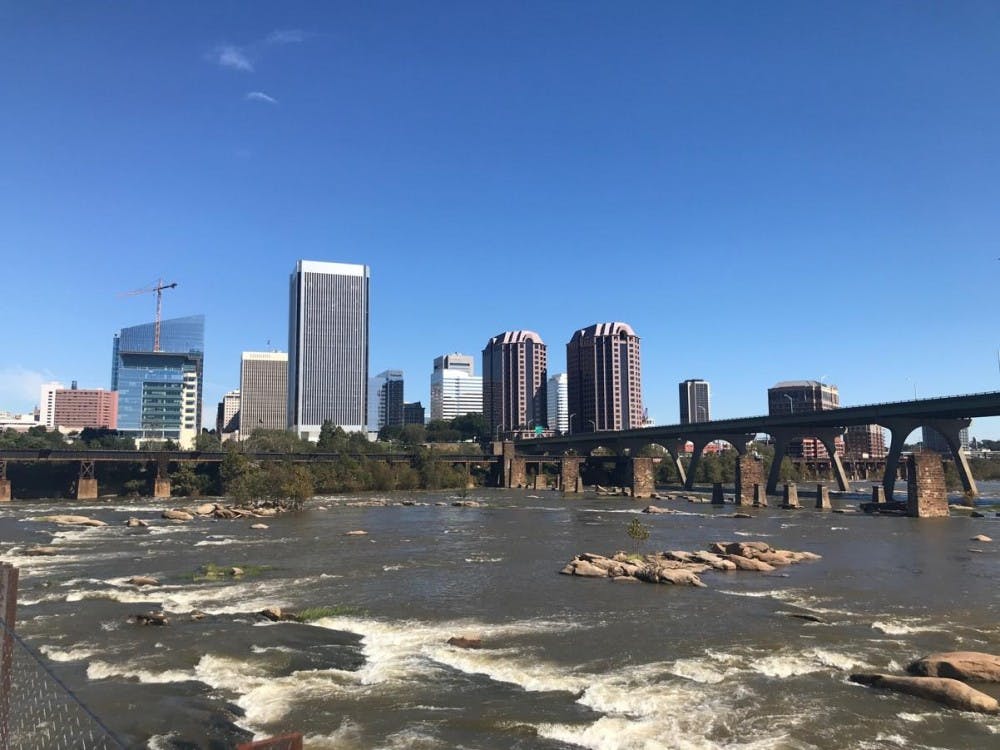Richmond Public Schools reopened for optional in-person learning on April 12 for 800 students, making the area one of the last school divisions in Virginia to return to in-person learning during the COVID-19 pandemic, according to the Richmond Free Press.
RPS expanded the use of J.H. Blackwell, Linwood Holton, and Miles J. Jones elementary schools, Martin Luther King Jr. Middle School and Huguenot High School, which had been operating as emergency day cares, according to the Richmond Free Press.
There were 300 spaces available specifically for high-needs students and English learner students in kindergarten through fifth grade, and 500 additional spaces for students who chose to return to in-person learning, according to WRIC.
In September, Richmond schools remained remote along with 66 other school divisions, said Kimberly Bridges, assistant professor and co-coordinator of the Department of Educational Leadership at Virginia Commonwealth University and former RPS school board member.
Bridges has been keeping up with the statewide opening plans through the Virginia Department of Education’s website, which features a map that tracks Virginia counties’ returns to in-person learning, she said.
“You know, there were a lot more fully remote school divisions, and then one by one they sort of started changing," she said. "What’s been interesting to me is that Richmond has not."
Richmond was one of three school divisions across Virginia that did not adhere to Gov. Ralph Northam’s request to open for in-person learning by March 15.
Bridges was surprised to learn that Richmond was one of only three remote counties left in the state, she said.
RPS Superintendent Jason Kamras offered the current reopening plan at the Richmond School Board meeting on March 1, and the plan was passed that day, according to WRIC.
Kamras recommended an earlier plan on Feb. 16 for year-round schooling that could have helped around 20% of the division’s most at-need students, according to NPR. The plan included seven weeks of extra instruction spread across the year for 5,000 students determined to have the highest needs, and was proposed to begin this upcoming summer, according to WRIC.
The plan included a summer break, but it would have been five weeks long for those students participating in additional instruction and eight weeks long for other students, according to WRIC.
Yalibi D’Addario, a Spanish and French teacher for English learners at two Richmond elementary schools, said she had not been excited about the prospect of teaching during the summer. Summers are the only time she gets to see her family, who live overseas, she said.
Enjoy what you're reading?
Signup for our newsletter
Following the approval of Kamras's March 1 reopening plan, some of D'Addario's students became eligible to return for in-person learning as English learner students, she said. D'Addario said she had not heard that any of her students would return.
“A lot of the kids at home don’t speak English at all, don’t watch TV in English,” she said. “They might not have people around them to speak English, why would they, you know? They speak their own language at home.”
Students of a young age can learn a lot in a year, D’Addario said.
“That is something they do not get this year," she said. "They need that interaction.”
Because D’Addario opted out of in-person teaching, the parents of her students did not want their children to return to in-person learning and have to restart school with a new teacher, she said.
A survey showed that 63% of RPS families did not want children to return to in-person learning.
Theresa Kennedy is a parent of two elementary school children who attend a Richmond public school. Her children have been at home with a tutor while she and her husband are at work during the day, but she was disappointed that the school board had not approved the year-round calendar, she said.
“We’re super fortunate that we were able to bring in someone,” she said. “Not having school has been really hard for the families, and they’re just like, basically not getting educated.”
Kennedy said people did not know what the best options were.
Some RPS buildings have old HVAC systems that need to be remediated before students can return in person, so the division is in a tough spot, she said. HVAC filtration, standing for heating, ventilation and air conditioning, is part of the Environmental Protection Agency's plan to slow the spread of airborne COVID-19 particles.
Kennedy plans to send her children back to in-person instruction after Labor Day, she said.
Henrico, a neighboring county to Richmond where some of Kennedy’s friends’ children go to school, reopened for in-person learning Feb. 22, she said.
Bridges said that although Norfolk and Richmond county school divisions were often compared for their similar demographics, the Norfolk division had opted to begin in-person learning March 15.
Bridges looked back at the VDOE’s map once she heard that Norfolk was resuming face-to-face learning, she said.
“I thought, ‘Oh they’re considered sort of a peer district’ because of similar size, similar urban, you know, geography, similar demographics of student,” Bridges said.
Henrico and Chesterfield -- two divisions surrounding Richmond -- opened for at least four days of in-person learning for all students in February and March, respectively, Bridges said.
“What I think is interesting about that is Richmond overall is known to have a higher concentration of students from socioeconomically disadvantaged families and students of color, and so, you know, that starts to, to just raise questions of equity, and what are students getting access to in the surrounding counties that they aren’t in the city,” Bridges said.
The difference between Henrico and Richmond’s plans interested Bridges because they have a combined health district that has been tracking the spread of COVID-19 and conducting vaccinations, she said.
“The health district is sort of doing things that both the city and Henrico county residents can take advantage of, and yet the school systems are doing two different things in terms of instructions,” Bridges said. “So it's just wild to try to figure all this out. But I can’t pretend to have any insight for it in terms of the decision-making."
Despite the differences between divisions, Bridges said she was fascinated that it hasn't seemed like a bigger issue in Richmond.
"People aren’t saying, 'Well hey, all these similar divisions are doing something different but Richmond’s kind of holding the line,'" she said.
Contact City & State writer Hannah Levine at hannah.levine@richmond.edu.
Support independent student media
You can make a tax-deductible donation by clicking the button below, which takes you to our secure PayPal account. The page is set up to receive contributions in whatever amount you designate. We look forward to using the money we raise to further our mission of providing honest and accurate information to students, faculty, staff, alumni and others in the general public.
Donate Now



